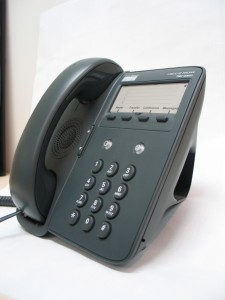

 A disciplined Lean thinker is always looking to improve his or her own personal efficiency and effectiveness. Lately I’ve had ample opportunity to explore how we’re using–or not using as the case may be–an “old-fashioned” tool: the telephone. Are you using the telephone to maximize the quality of your communication and the speed in which it occurs? Or are you over-reliant on written communication such as email and texting, which can slow communication and be easily misinterpreted?
A disciplined Lean thinker is always looking to improve his or her own personal efficiency and effectiveness. Lately I’ve had ample opportunity to explore how we’re using–or not using as the case may be–an “old-fashioned” tool: the telephone. Are you using the telephone to maximize the quality of your communication and the speed in which it occurs? Or are you over-reliant on written communication such as email and texting, which can slow communication and be easily misinterpreted?
We often think email is more efficient when it’s not. Most people under-estimate the time it takes to compose an email. When I work with improvement teams and ask them to quantify the process time (touch time) for composing an email that’s part of the current state process, the actual time to compose is nearly always double their initial estimates.
Email communication often adds more lead time (process time + waiting) to the process as well. The telephone is such an under-utilized tool today and email queues are often so long that you often get quicker responses by picking up the telephone.
But the quality of our communication–and therefore our relationships–may be the biggest reason why we all need to reflect on how we use email and make necessary adjustments.
The most important reason for having a conversation when it’s needed falls in the “effectiveness” camp. It’s no surprise that emails can convey a completely different message than what’s intended. Without the benefit of “real” tone (as opposed to the tone we think we hear in someone’s writing) and real-time clarification, emails are often misinterpreted. As Anthony Tjan stated in his December 2011 Harvard Business Review post, Don’t Send That Email. Pick up the Phone!: “In a live conversation, how one says something, with modulations and intonations, is as important as what they are saying. With email it is hard to get the feelings behind the words.”
And the endless back and forth that can sometimes occur often frustrates as much as it slows progress. Remember, email is a one-way information transfer vehicle. When you trade seven emails with someone about an issue that could have been solved in a three-minute telephone call, it’s time to re-think how and why we turn to email as our preferred method of communication.
In his excellent book about applying Lean to improves one’s personal productivity and work quality, A Factory of One, author Dan Markovitz refers to email as “the problem child.” But it doesn’t need to be if we become far more deliberate in choosing the most effective communication vehicle for the issue at hand.
Say hello to the telephone. It can be your friend.